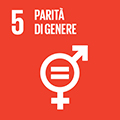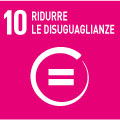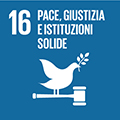- Docente: Susanna Vezzadini
- Crediti formativi: 8
- SSD: SPS/12
- Lingua di insegnamento: Inglese
- Moduli: Susanna Vezzadini (Modulo 1) Chiara Gius (Modulo 2)
- Modalità didattica: Convenzionale - Lezioni in presenza (Modulo 1) Convenzionale - Lezioni in presenza (Modulo 2)
- Campus: Bologna
-
Corso:
Laurea Magistrale in
International Relations (cod. 9084)
Valido anche per Laurea Magistrale in Comunicazione giornalistica, pubblica e d'impresa (cod. 5703)
-
Orario delle lezioni (Modulo 1)
dal 13/02/2025 al 20/03/2025
-
Orario delle lezioni (Modulo 2)
dal 01/04/2025 al 13/05/2025
Conoscenze e abilità da conseguire
The aim of the course is to provide an advanced and critical overview of the role of victims of crime, abuse of power, social exclusion and repression in contemporary society with regards to the main theoretical approaches in the discipline as a reflection of the changing of structure dynamics and relations at all levels. At the end of the course students will be able to: analyze processes of victimization in contemporary societies in a broader political and socio-economic context; set the peculiar condition of victims in the frame of multiple interactions with regards to national and supra national Institutions; recognize the ambivalence of victims’ role inside the judiciary and criminal justice systems in a comparative perspective; apply the “new” victimology of human rights in an original and interdisciplinary approach that transcends current official and social perspectives of victimization and its sources.
Contenuti
FOR EXCHANGE STUDENTS: the admission to the course is allowed to incoming students at Master's level; Undergraduate students must demonstrate to the Professor having already aquired those competences in the following disciplines: Sociology of Law; Sociology of Deviance, Crimonology; Victimology
The aim of the course is to provide an advanced and critical overview and understanding of the role of victims of crime and abuse of power, social exclusion and repression in contemporary society with regards to the main theoretical approaches in the discipline as a reflection of the changing of structure dynamics and relations at all level in the "global era".
Lessons will take place during the SECOND SEMESTER.Testi/Bibliografia
FOR ATTENDING STUDENTS ONLY:
S. Vezzadini (edited by), Ideal and real victims. Political discourse and media representation in contemporary societies, BUP, 2024.
(OPEN ACCESS)Moreover, during the lessons articles and other documents will be given to students, for the preparation of papers and comments, and to promote the discussion in the class.
FOR NOT ATTENDING STUDENTS:
1) S. Vezzadini (edited by), Ideal and real victims. Political discourse and media representation in contemporary societies, BUP, 2024.(OPEN ACCESS)2)C. Gius, Addressing the Blurred question of ‘responsibility’: insights from online news comments on a case of nonconsensual pornography [https://cris.unibo.it/handle/11585/819744], «JOURNAL OF GENDER STUDIES», 2022, 31, pp. 193 - 203
3) L. Chouliaraki, The Mediation of suffering and the vision of a cosmopolitan public, Television &new media, 9 (5), 2008, pp. 371-391
4) L. Boltanski, The Legitimacy of Humanitarian Action and Their Media Representations: The Case of France, Ethical Perspectives, 2000, 7(1), pp.3-16.
Metodi didattici
Lessons and lectures in the classroom, with the active and direct partecipation of students (for example presentation and discussion of papers on specific topics). With regards to this last opportunity, further information would be given to students at the beginning of the course.
Modalità di verifica e valutazione dell'apprendimento
For attending students only, the final mark will be the result of the sum of two different marks, referred to the first part of the course and the second one. Partecipation, discussion in the class, exchange of different points of view will be considered in a positive light; the evaluation of the first part of the course will consider the preparation of a written paper by each single student, on the topic the teacher will assign. The paper must meet the following requirements: length between 5 and 8 pages, 12 pt Times New Roman font, and 1.5 line spacing.
For the second part of the course, students will work in small groups to draft a final paper on the topics covered during the lectures. The paper must meet the following requirements: lenght between 5 and 8 pages, 12 pt Times New Roman font, and 1.5 line spacing (approximately 2.500-4.000 words).
Further indications will be provided during the course.
For non attending students, the exam is an oral one in the dates already published on the website (June, July and September).
Strumenti a supporto della didattica
Power point slides, articles given by the teacher during the lessons, vision in the classroom of films.
Link ad altre eventuali informazioni
https://www.unibo.it/sitoweb/susanna.vezzadini/
Orario di ricevimento
Consulta il sito web di Susanna Vezzadini
Consulta il sito web di Chiara Gius
SDGs



L'insegnamento contribuisce al perseguimento degli Obiettivi di Sviluppo Sostenibile dell'Agenda 2030 dell'ONU.
